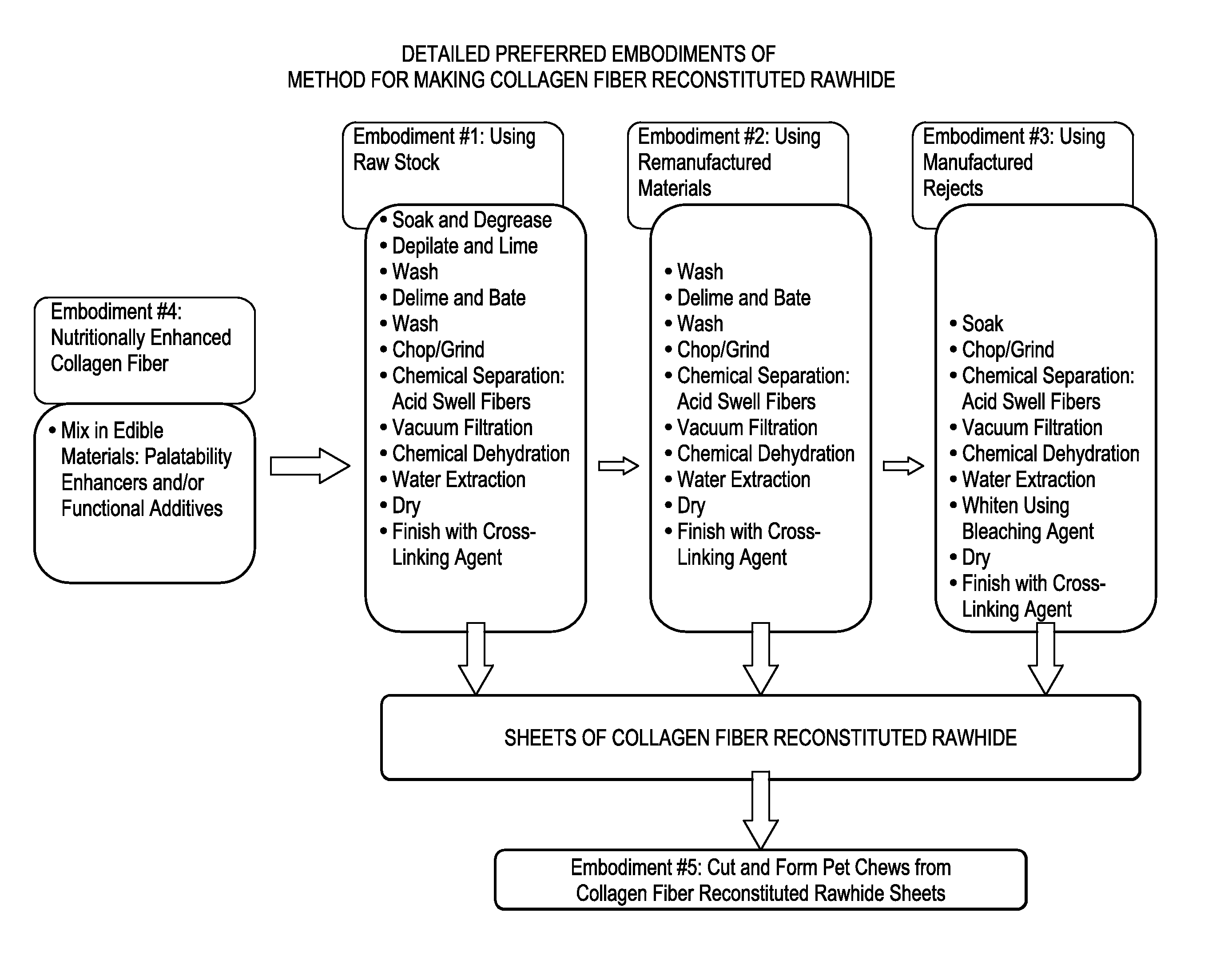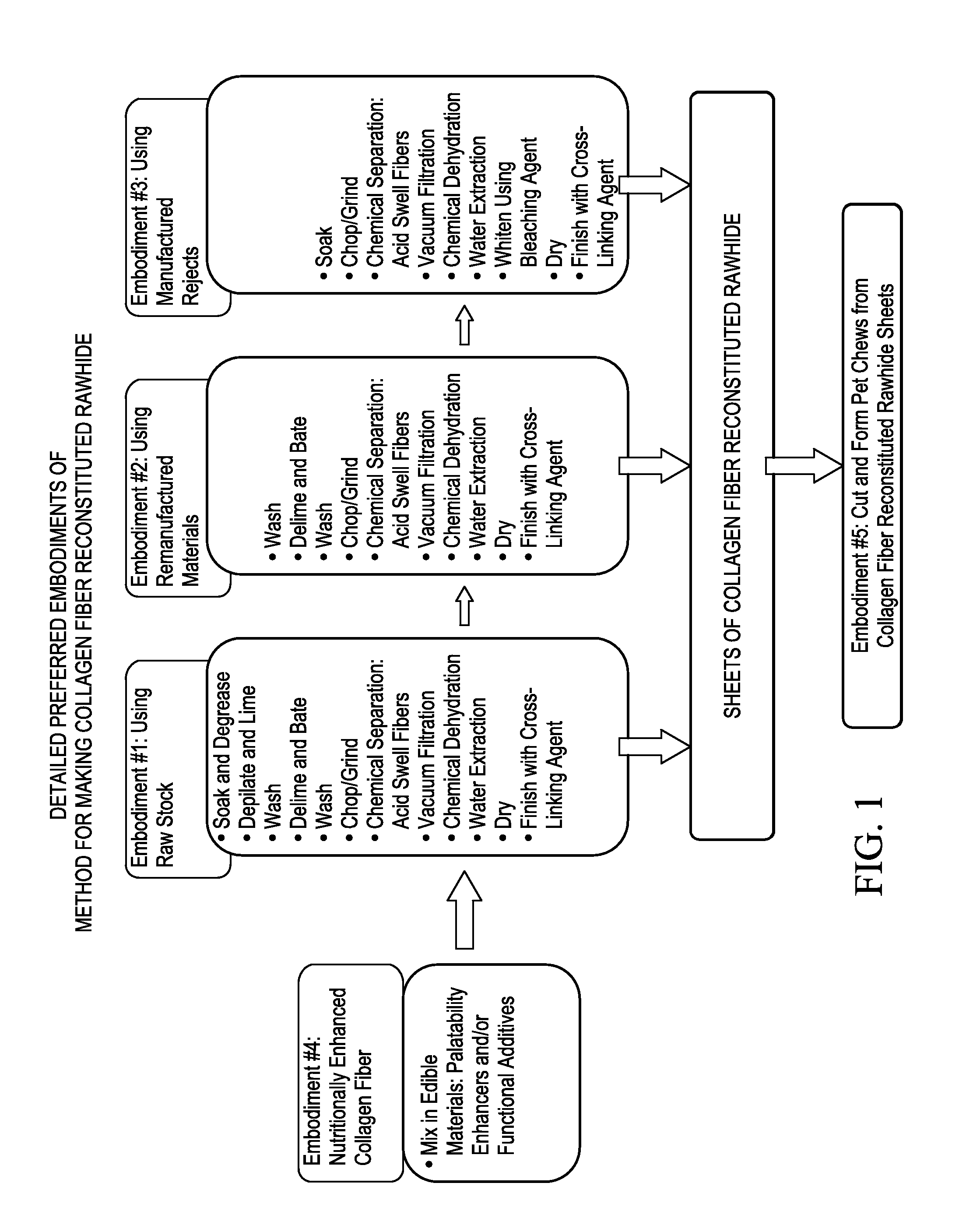Collagen fiber reconstituted rawhide and process for making
a collagen fiber and rawhide technology, applied in the field of animal nutrition and pet chews, can solve the problems of hard and brittle gelatin, hard and brittle rawhide material scraps, difficult to bend and knot into popular chew shapes, etc., to achieve good nutrition value and flavor, promote specific health conditions, and controllable shape, size and thickness
- Summary
- Abstract
- Description
- Claims
- Application Information
AI Technical Summary
Benefits of technology
Problems solved by technology
Method used
Image
Examples
Embodiment Construction
[0025]One aspect of the invention relates to creation of a specific collagen fiber structure though the preparation method illustrated in the flowcharts of FIG. 1, characterized by the steps of:[0026]1. Adjusting the pH value of the limed animal hide to [0027]2. Defibering and grinding the limed animal hide with the pH adjusted as per step 1 above to produce a collagen fiber suspension;[0028]3. Optionally, filtering and removing un-dissolved skin fibers from the collagen fiber suspension;[0029]4. Dehydrating the collagen fiber suspension to contract the expansive state of the collagen fibers;[0030]5. Draining the collagen fiber suspension produced in step 4 above, placing the remaining slurry in a form, and mechanically removing water by draining, pressing and drying the collagen fiber reconstituted rawhide.[0031]6. Applying a cross-linking agent to the formed and dried collagen fiber reconstituted rawhide to tighten the fiber bonds and finish the reconstituted rawhide;[0032]7. Opti...
PUM
 Login to View More
Login to View More Abstract
Description
Claims
Application Information
 Login to View More
Login to View More - R&D
- Intellectual Property
- Life Sciences
- Materials
- Tech Scout
- Unparalleled Data Quality
- Higher Quality Content
- 60% Fewer Hallucinations
Browse by: Latest US Patents, China's latest patents, Technical Efficacy Thesaurus, Application Domain, Technology Topic, Popular Technical Reports.
© 2025 PatSnap. All rights reserved.Legal|Privacy policy|Modern Slavery Act Transparency Statement|Sitemap|About US| Contact US: help@patsnap.com



